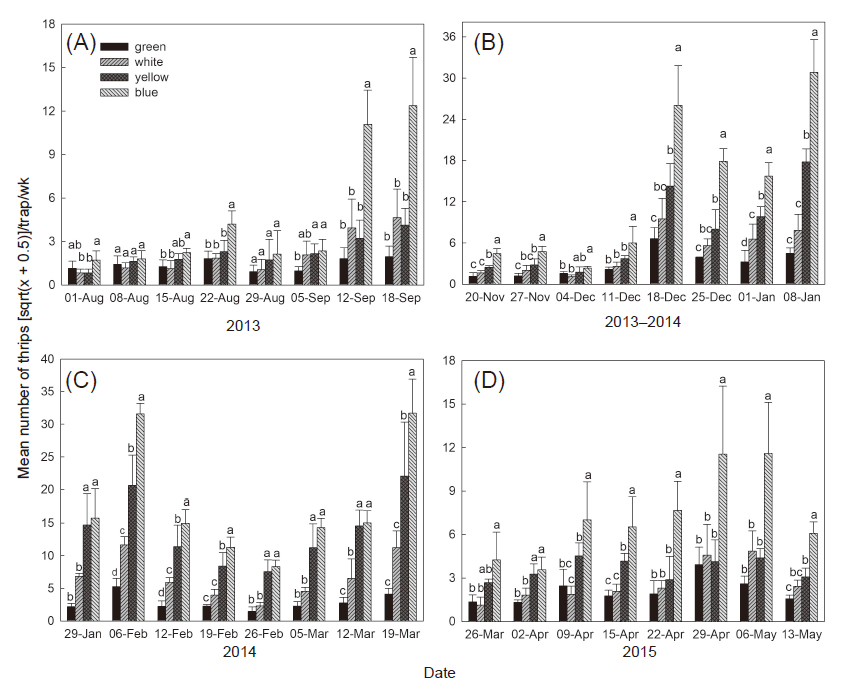All issues

Author:Hsin-Shun Lai* and Feng-Chyi Lin
Abstract:
Yardlong bean (Vigna unguiculata ssp. sesquipedalis) is one of the important legume vegetables in Taiwan. Thrips (Thysanoptera: Thripidae) is a group of the major pests of yardlong bean. To decide the best timing to use pesticides, it is necessary to establish a sampling plan for thrips in the yardlong bean farm and to gain an insight into the timing of pesticide application for controlling thrips. In this study, two thrips, Megalothrips usitatus (Bagnall) and Frankliniella intonsa (Trybom), were investigated in yardlong bean flowers in the farms in southern Taiwan. M. usitatus is the dominant species at Meinong, Kaohsiung City, whereas F. intonsa is the dominant species at Ligang, Pingtung County. Color preference for thrips in the yardlong bean farm was tested. The results showed that thrips preferred blue sticky traps, followed by yellow sticky traps. Comparing the attractive effectiveness of blue sticky traps and yellow sticky traps, the number of thrips attracted by blue sticky traps was significantly higher than those of yellow sticky traps. Therefore, blue sticky traps are better monitoring tools used for thrips in the yardlong bean farms. Taylor’s power law was used to analyze the number of thrips trapped by sticky traps in 6 yardlong bean farms. The spatial distribution of thrips on the sticky traps in the yardlong bean farm was clumped. It was estimated by how many sticky traps are required for thrips management in 6 yardlong bean farms. In pest management, if 30 thrips are lured per sticky tarp per week as the timing of control, only 4–10 blue sticky traps are needed in each of these 6 farms of yardlong bean. In conclusion, the sampling plan for thrips on yardlong bean is recommended to use the blue sticky traps as a tool to monitor the early invasion of thrips. The results also provide better understanding of the best timing on chemical pesticide application to control thrips.
Key words:Yardlong bean, Thrips, Color preference, Spatial pattern, Sample size
Download:![]() PDF Links
PDF Links
- 1. Development of Tractor-Mounted Seedling Transplanter for Sweet Potato
- 2. Synergistic Effect of Additional Gas on the Toxicity of Phosphine to Sitophilus oryzae and Sitophilus zeamais (Coleoptera: Dryophthoridae)
- 3. Effects of Temperature and Solar Radiation on Growth Traits and Plant Elements in Purple Leafy Sweet Potato
 Submit your manuscript
Submit your manuscript
 Guide for authors
Guide for authors